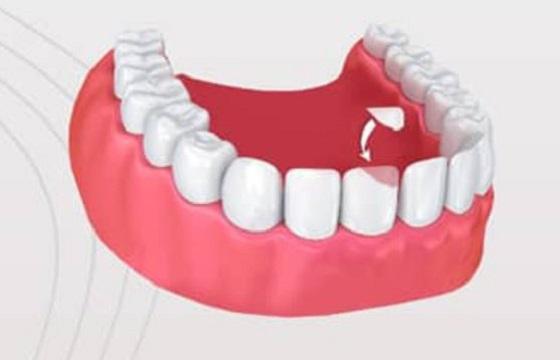Dental Bonding
Dental bonding is a versatile and cost-effective way to improve the look of teeth, but it may not last as long as other restorative treatments such as porcelain veneers and dental crowns. However, with appropriate care and maintenance, can endure for several years before it has to be repaired or replaced.

What is Dental Bonding
This is an aesthetic dental procedure used to improve the appearance of teeth. It consists of placing a tooth-colored resin substance to the tooth and then hardening it using a specific light. Dental bonding can be used to repair broken or fractured teeth, cover gaps between teeth, modify the form or color of teeth, and even shield a section of the tooth's root that has become exposed due to gum recession.
How long time takes of Dental Bonding Process
Which Metarials used?
Dental bonding generally makes use of composite resin components. These materials are tooth-colored and may be tailored to match the patient's natural tooth color. Composite resins are made up of a combination of plastic and glass or ceramic particles that add durability and aesthetic appeal. The bonding procedure may also include the use of adhesive chemicals and dental equipment to adequately prepare the tooth surface and apply the bonding substance. These components combine to adhere the composite resin to the tooth structure, resulting in strength, longevity, and a natural look.
Process
Consultation: The procedure begins with a meeting with your dentist to discuss your issues and goals. Your dentist will evaluate your oral health and decide whether the best treatment choice for you.
Preparation: If considered acceptable, your dentist will clean and roughen the tooth surface. This allows the bonding material to attach more efficiently to the tooth.
Color matching: To guarantee a flawless fit, your dentist will choose a shade of composite resin that closely matches the color of your existing teeth.
Application of bonding material: Layers of composite resin are placed to the tooth. Your dentist will mold and sculpt the material to the appropriate size, shape, and contour.
Curing: After the bonding substance has been applied, it is hardened (cured) using a specific curing lamp. Each layer is cured separately to guarantee optimal bonding and strength.
Shaping and polishing: Once the bonding material has solidified, your dentist will trim and shape it to create the desired appearance. The bonded tooth is then polished to match your other teeth's natural luster.
Final adjustments: Your dentist will make any necessary changes to ensure that the bonded tooth fits properly and feels natural in your mouth.
Evaluation: Once the bonding process is completed, your dentist will examine the results to verify that the bonded tooth looks and operates properly.
Typically be accomplished in a single dental session, making it an easy alternative for restoring the look of teeth with minor flaws like chips, fractures, or discolouration.
Alternatives
Dental Veneers: Veneers are thin shells of porcelain or composite resin that are custom-made to cover the front surface of the teeth. They can help to enhance the look of teeth that have stains, chips, cracks, or gaps.
Dental Crowns: Crowns, also known as caps, are teeth-shaped coverings that enclose the whole visible area of the tooth. They are frequently used to repair and strengthen teeth that have been badly damaged, decaying, or weak.
Orthodontic Treatment: If your teeth are misaligned or crooked, orthodontic treatment such as braces or transparent aligners (e.g., Invisalign) may be prescribed to correct them and improve overall bite alignment.
Teeth Whitening: Teeth whitening procedures can help to brighten and lighten the color of stained or discolored teeth. This may be a viable alternative for anyone looking to improve the appearance of their smile owing to tooth discolouration.
Dental implants are artificial tooth roots surgically implanted into the jawbone to support replacement teeth (crowns or bridges). They are frequently used to replace lost teeth and can give a more permanent option for restoring function and aesthetics.
Dental Fillings: Dental fillings composed of composite resin, amalgam, or other materials can be used to restore the structure and function of a tooth with tiny cavities or decay.
Gum Contouring: When excess gum tissue interferes with the look of the smile (gummy grin), gum contouring or gum reshaping surgery may be performed to remove or reshape the gum tissue and enhance the smile's balance and symmetry.
Dental bridges are dental restorations that restore one or more missing teeth by attaching prosthetic teeth (pontics) to nearby natural teeth or dental implants. They can be used instead of restore function and aesthetics in the case of lost teeth.
How long does Dental Bonding last?
The lifetime is determined by a number of factors, including the bonding's placement, the patient's oral hygiene practices, and lifestyle factors such as nutrition and behaviors like teeth grinding or biting on hard items. Can last anywhere from 3 to 10 years before requiring repair or replacement.
Frequently asked questions about Dental Bonding
*The treatment pages provided on this platform are intended for informational purposes only and do not constitute medical or dental advice, diagnosis, or treatment recommendations. The information presented on these pages is not a substitute for professional medical or dental advice from qualified healthcare providers.
*By accessing and using the treatment pages on this platform, you acknowledge and agree to the terms of this disclaimer. If you do not agree with these terms, please refrain from using the treatment pages.